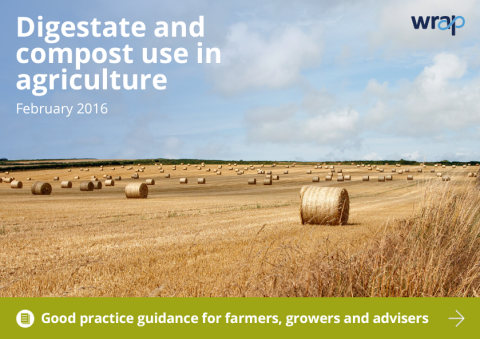Key points
- Integrating renewable and bagged fertilisers can increase crop yields and reduce fertiliser costs
- Renewable Fertiliser Matrix shows how digestate & compost can be used with different crops
- Tailored guidance available for farmers and agri-contractors
- Guides include handy checklists
Overview
Anaerobic digestate and compost can be considered renewable fertilisers, much like livestock slurry and farmyard manure.
These guides provide an introduction to compost and anaerobic digestate, how they should be integrated into farm nutrient planning, and how they should be applied to the field.
These guides are intended to complement rather than replace other statutory or good practice guidance for handling these materials.
As part of this guidance WRAP has developed two separate guides for farmers, growers and advisers
and agricultural contractors (covering haulage and application). A further reference version has also been developed, for anyone interested in understanding the guidance in greater detail.
For more information about the guides, please use the following links:
Farmers growers and advisers >>
Agriculture contractors >>
Reference version >>
Guides
Farmers growers and advisers
This guide provides an introduction to compost and anaerobic digestate, how they can be integrated into farm nutrient planning and how they should be applied to the field. Includes the Renewable Fertiliser Matrix.
- Written specifically for farmers, growers and agronomists.
- Provides typical nutrient contents of digestate and compost for use in fertiliser planning.
- Provides guidance on NVZ and other regulatory compliance.
Jump to:
Introduction >>
Definitions >>
Quality and certification >>
Waste permits >>
Nutrient planning >>
Restrictions >>
Field application >>
Renewable fertiliser matrix >>
Notes and references >>
Download the complete guide >>
Agricultural contractors
This guide for agricultural contractors provides an introduction to compost and anaerobic digestate, the importance of supplying the right quality, and how they should be applied to the field.
- Written specifically for agricultural contractors.
- Explains considerations required for digestate and compost made from food waste.
- Includes guidance on how best to apply to help maximise the fertiliser value.
Jump to:
Introduction >>
Definitions >>
Quality and certification >>
Haulage >>
Storage on farm >>
Food waste products >>
Crop suitability >>
Field application >>
Verifying quality >>
Fertiliser matrix >>
Notes and references >>
Download the complete guide >>
Reference version
This is the full reference version of the good practice guide, relevant to anyone interested in understanding the guidance in greater detail.
- Details the agronomic properties of digestate and compost.
- Includes financial breakdowns of the value and costs of using renewable fertilisers.
- Explains the Biofertiliser and Compost Certification Schemes for sourcing quality assured products.
Jump to:
Summary >>
Renewable fertilisers >>
Safety and acceptability >>
Properties >>
Value and costs >>
Managing renewable fertilisers >>
Checklist, notes and references >>
Download the complete guide >>
Related
To find information related to that contained in this report, please use the following link:
Digestate use in landscape and regeneration >>


